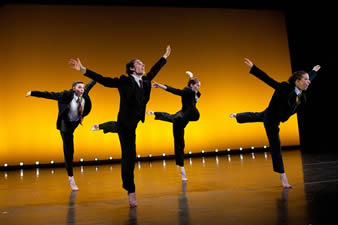A close-to-full house turned out at the First Presbyterian Church in downtown Durham for a concert by the Philharmonic Quintet of New York inaugurating a new series, Music on Main, taking musical advantage of the renovated space of the main sanctuary. Though the members are seasoned professionals (the white locks and bald pates matching those in the audience) the ensemble itself only dates to 2001.
A curmudgeonly critic (like myself) is accustomed to grumble about the narrow vision of string quartets when it comes to repertoire (more Beethoven!#?!), and the great advantage of the wind quintet is that by necessity it must be adventurous. Even the warhorses remain little known, and the excursions are to another planet entirely. The PQNY (Mark Nuccio, clarinet; Sherry Sylar, oboe; Erik Ralske, horn; Judith Leclair, bassoon, and Robert Langevin, flute) began the program with a quintet staple, the Nielsen, composed in 1922, and hence a relatively late work for the Danish composer, a contemporary of Mahler. The work is quite conservative in style, with a boisterous Allegro leading to a minuet and a concluding set of variations. The resonant space of the sanctuary was overfilled by fortes of the ensemble, so that the mass of sound registered, rather than individual details. The solos and duos were easier to take in, and the acoustic was particularly flattering to the solo bassoon.
Lalo Schifrin is known above all for his film scores. His “La Nouvelle Orleans” is technically challenging for the players, but musically slight, a sort of bagatelle – in New Orleans they might say that the PQNY gave it to the listeners as lagniappe (look that up in your Funk & Wagnall’s….). First, there was a filmic section based on a slurred ostinato decorated with florid counterpoints, leading to a brief “jazzy” section. The players played it for all it was worth.
After intermission, there was the third quintet (1999) by David Maslanka (b. 1943). The Massachusetts-born composer, to judge by this work, has a relatively conservative idiom. It was full of chorale and chorale-style writing, much less brilliant than the Nielsen, quieter, and remaining in the lower ranges of the instruments. Most impressive to these ears was the second movement, with beautifully and expressively played passages for the solo flute (what mastery of tone and color!) set against the ensemble. The work as a whole, at thirty minutes, was too long for its structure, almost overstaying its welcome, even with the first-rate performance it got from the PQNY.
The concert was received thunderously by the large crowd, which was granted two encores. A beginning that augurs well for future events in downtown Durham.











